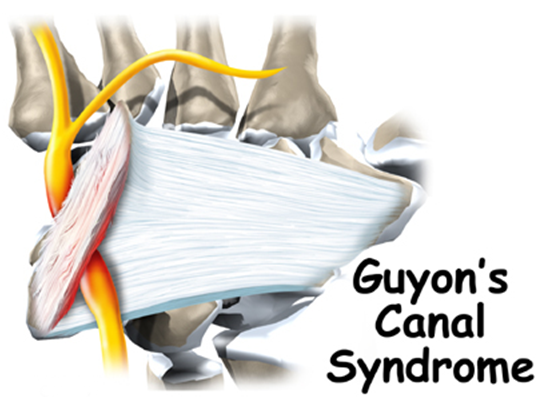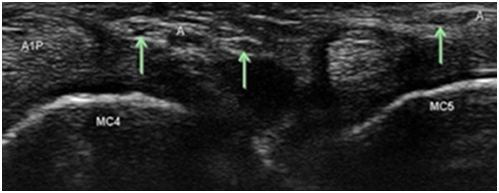| Category | Nerve Blocks |

Guyon’s canal syndrome is a condition that causes pain, tingling, and numbness in certain hand areas. The Guyon canal is a tunnel in the wrist through which the ulnar nerve (one of three nerves supplying the hand) and the ulnar artery pass to enter into the hand. As a result, Guyon canal syndrome is also known as ulnar tunnel syndrome.
The most common cause of Guyon’s canal syndrome is a ganglion cyst. It is a fluid-filled growth that develops on the wrist and compresses the nerve. Tumors and anatomical abnormalities also cause this disorder.
Symptoms
Imaging tests to check for bone fractures, dislocation, other wrist injuries and help rule out other possible conditions such as arthritis. Imaging tests include X-rays, MRIs, CT scans, and ultrasound.
Ultrasound examination of the ulnar nerve may show thickening of nerve.
Reducing and modifying activities that compress the nerve and cause the symptoms.
Physical therapy to relieve symptoms and decrease hand weakness.
Ultrasound guided hydrodissection of nerve with or without steroid injection gives very good results

The doctor will clean the area over the region of interest and insert a small needle into the target area under imaging guidance. When it is in the correct position, they will inject the drug. They will remove the needle and cover the injection site with a small dressing.
We have very fast and competent working team (Consultant, fellow, clinical assistant, technician and ward assistant) which provide you comfortable atmosphere and ease your nerves. Usual time of stay is few hours
Every procedure carries a risk, although this is extremely small. The risk of infection with this procedure is extremely small as no incisions are made in the skin.
You can resume your work after 1 day if existing disease allows.